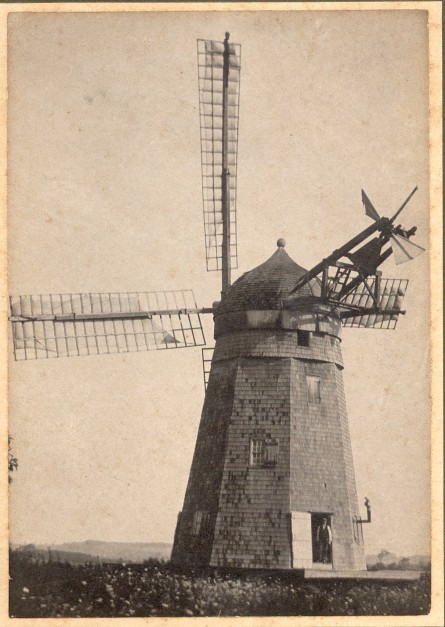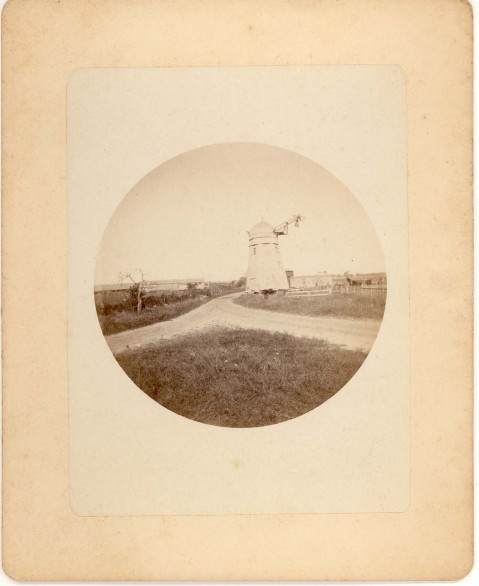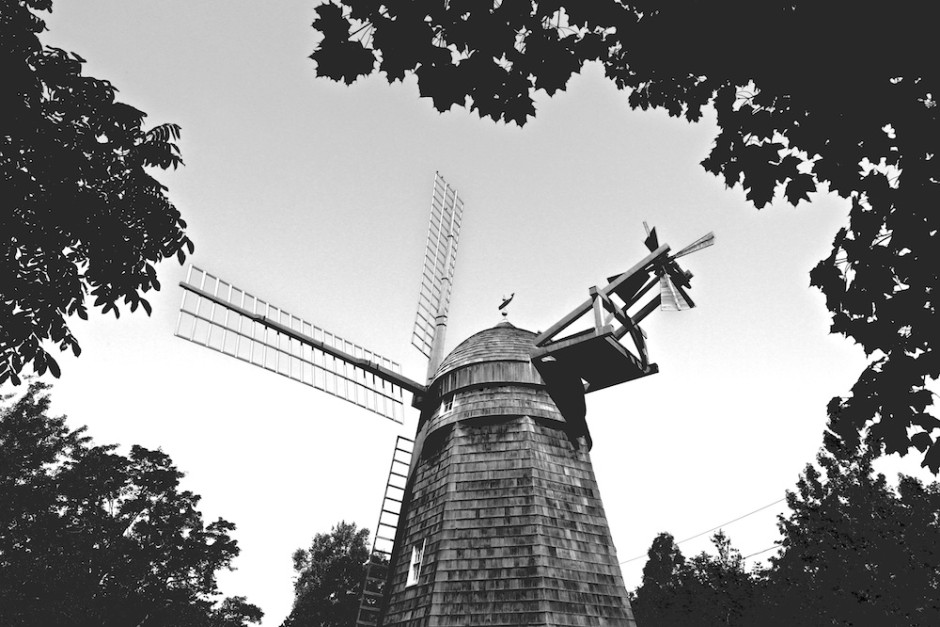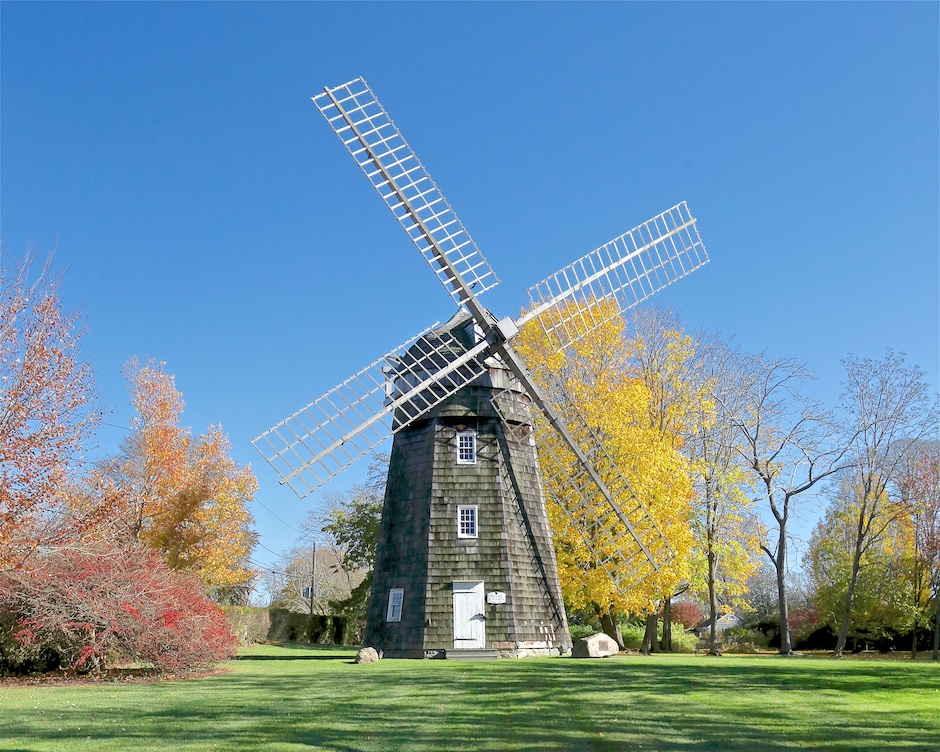
Beebee Windmill, 1820, John E. Berwind Memorial Village Green. November 16, 2016.
—————————————————-
 The Beebee Windmill
The Beebee Windmill
John E. Berwind Village Green, Bridgehampton
The Beebee Windmill, which graces the John E. Berwind Village Green, corner of Ocean Road and Hildreth Avenue, Bridgehampton, is one of only eleven windmills remaining from the era when wind and water provided the power for grinding grain into flour and meal. This remarkable mill, first erected in Sag Harbor, has occupied no fewer than five sites. Its history is intertwined with such renowned local names as Rose, Ludlow, Hedges, Topping, Seabury, Sanford, Sayre and Schellinger.
One of Long Island’s more recent mills, the Beebee windmill is an important example of American technology in a transitional period. A smock mill with a stone foundation and four-story tower, the Beebee Windmill is particularly significant for its cast iron gearing and its fantail. The gearing includes every combination of wood, iron shafting and cog work. The Beebee windmill is the only remaining Long Island mill with compound iron and wood gearing. The many locations for the mill attest to its utility throughout the 19th and early 20th centuries, including a period when its operation was converted to steam power heralding a new era in American technology.
The Beebee windmill was built on Sleight’s Hill, Sag Harbor, in 1820 for Lester Beebee, a retired whaling captain and shipbuilder. The construction was undertaken by Pardon Tabor, a local woodworker and fine craftsman, and Samuel Schellinger, an Amagansett millwright. At the time of completion, the Beebee Windmill was the tallest structure in Sag Harbor. It was the miller’s custom to hoist a flag from the top of the curved ogee cap whenever a homeward bound whaling vessel was sighted in the Bay. The local expression to describe the event was “Flag on the mill, ship in the Bay.”
Following Lester Beebee’s death, his brother sold the mill to Judge Abraham Topping Rose, a descendent of one of Bridgehampton’s original settlers, and Richard Gelston, owner of The Bull’s Head Tavern. Rose and Gelston had the massive mill hauled down the turnpike to Bridgehampton and placed on a high piece of ground just north of the present Presbyterian manse. For the next half century it operated there under a succession of different owners, including Charles Norris, Major Roger Francis, Squires Hedges Miller, Charles Topping, E. Jones Ludlow, Albert Topping and Lafayette Seabury.
In 1882, the mill was purchased by James A. Sandford who moved it for the second time in 1888 to a site near the railroad station. To lessen the mill’s dependence on the vagaries of wind, Sandford subsequently installed a steam engine in the mill. In the same year, Nathanial Dominy VII, scion of a long line of windmill builders and clockmakers, made extensive repairs to the mill. In 1899, the mill was purchased by Oliver Osborne and moved to the north side of the railroad tracks. In 1900, the mill was sold to the Bridgehampton Milling Company, which operated it for many years.
In 1915, John E. Berwind, an affluent Bridgehampton summer resident, bought the mill and moved it to the grassy green next to Minden, his summer estate. Berwind, a Pennsylvania industrialist and an enthusiastic supporter of local causes, was instrumental in establishing the Community House, located in the center of the Village of Bridgehampton. It was fitting, therefore, for his widow to will the Beebee Windmill and two acres of land on which it stands to the Town of Southampton as a memorial to her late husband.
The Beebee windmill was restored by the Town of Southampton during the period 1981-1984 at a cost in excess of $192,000. Funding for the project included a grant-in-aid from the Department of the Interior and the Bridgehampton Village Improvement Society.
The Beebee windmill was renovated by the Town of Southampton during the period 2008-2009 at a cost of $350,000. This renovation was needed to repair storm damage to the sails and rot found on the main beam and fantail. The work was performed by Richard Ward Baxter Restorations of Amagansett with supervision from Robert Hefner and consultation from Cashin Associates.
On July 25, 2009, the Beebee Windmill was re-dedicated to the Town of Southampton at a ceremony sponsored by the Town of Southampton, the Bridgehampton Historical Society, and the Bridgehampton Village Improvement Society.
— Town of Southampton Brochure Copy, The Beebe Windmill
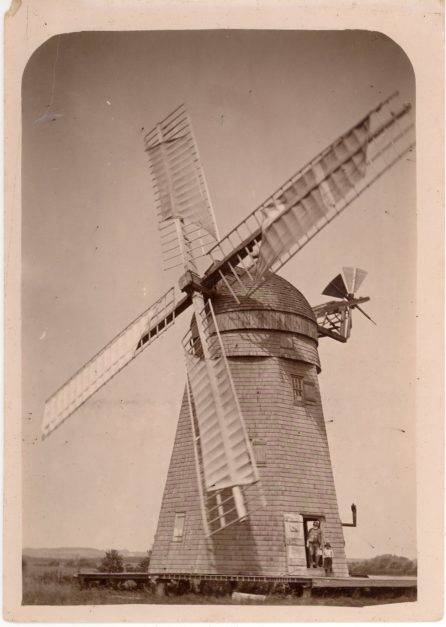
————–
~~~~~~~~~~~~~~~~~~~~~~~~~~~~~~~~
www.bridgehamptonhistoricalsociety.org
___________________________________________________


